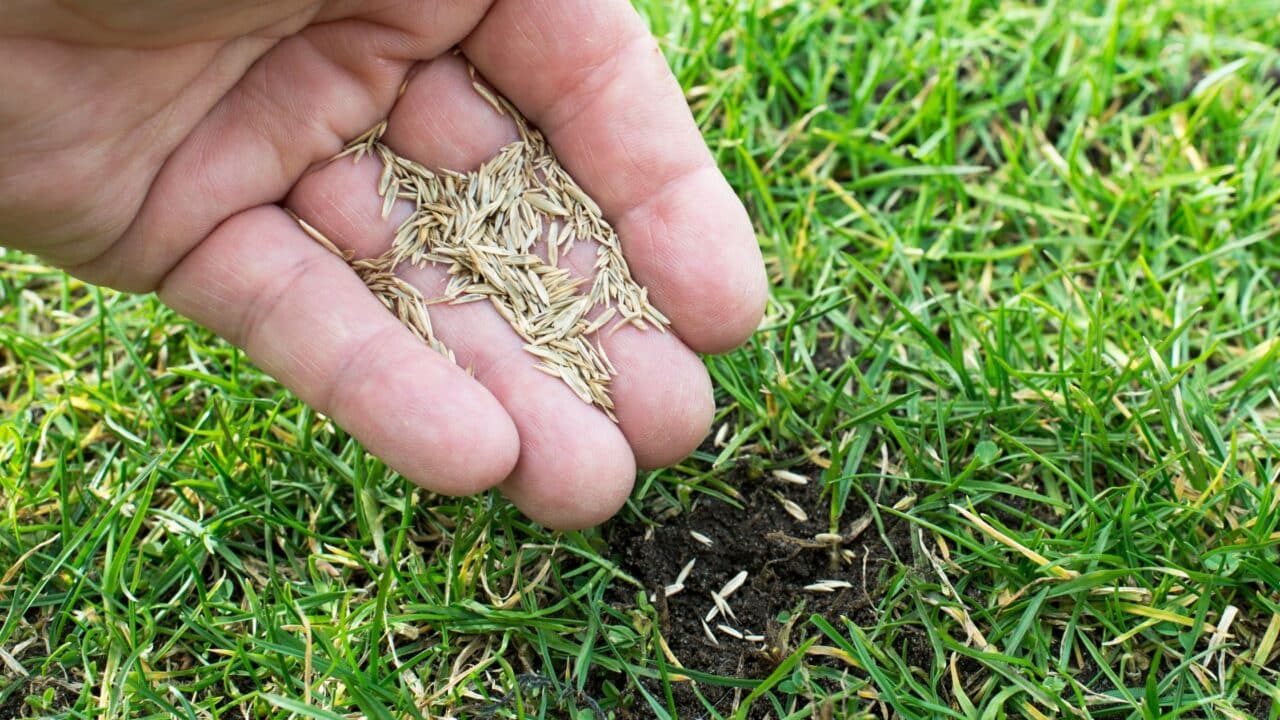New grass needs consistent moisture to establish strong roots—usually 1 to 1.5 inches of water per week, spread out over several sessions. Early morning watering is best, and using a sprinkler system helps ensure even coverage. Watch for signs of over- or under-watering like yellowing or dry patches, and adjust accordingly.
The Colin Can Help Guide to New Grass
You just invested time, money, or both into a new lawn—whether it’s freshly laid sod or grass seed you spread yourself. But now comes the part most homeowners overlook: proper watering. New grass needs more than luck and good weather to thrive. Without the right care, all that green can turn brown fast.
In this guide, we’ll break down exactly how to water new grass the right way, whether you’re using a garden hose or an in-ground sprinkler system. You’ll learn how much water is “enough,” the best time of day to water, warning signs to watch for, and how to avoid common mistakes that lead to patchy, struggling grass.
Let’s dig in.
🌱 Why Watering Matters So Much for New Grass
New grass—especially from seed or hydroseed—has shallow roots at first. It needs constant moisture to germinate, grow, and anchor into the soil. Sod has an advantage in that it already has mature blades, but it still requires plenty of water to establish roots in the new location.
Without the right amount of water:
-
Seed won’t germinate
-
Sod won’t root
-
New grass blades will dry out and die
A dry day or two might not hurt established turf, but new grass is a lot less forgiving.
💧 How Much Water Does New Grass Need?
Most new lawns need 1 to 1.5 inches of water per week, but here’s the key: that should be spread out over multiple watering sessions. Watering all at once just leads to runoff.
Here’s a typical schedule:
-
Days 1–14 (for seed or sod): Water once in the morning and once again in the early evening (unless it’s hot, then maybe 3x/day in short cycles). Keep the top inch of soil consistently moist.
-
Weeks 3–4: Water once a day, early morning. You can start watering deeper to encourage root growth.
-
Week 5 and beyond: Transition to 2–3 deep waterings per week. This helps establish drought resistance.
🕗 When’s the Best Time to Water?
Early morning (before 9 AM) is ideal.
Why?
-
Less evaporation
-
Cooler temperatures
-
More time for grass to dry before nightfall (which helps prevent fungus)
Avoid watering at night—it keeps the grass wet too long and increases risk of disease. Midday watering? It mostly evaporates before it can soak in.
🧪 What Does “An Inch of Water” Actually Mean?
This is where a lot of folks get tripped up. You hear “1 inch of water,” but what does that mean coming out of your hose or sprinkler?
Try one of these simple tricks:
-
Tuna Can Test: Place an empty tuna can on your lawn while watering. When it fills up, that’s about 1 inch of water.
-
Rain Gauge: An inexpensive way to measure exact amounts over time.
-
Time-Based Estimate (approximate):
-
Oscillating sprinkler: ~30 minutes = 1 inch
-
Hose with spray nozzle: Varies too much to rely on—use a gauge!
-
In-ground system: Check manufacturer flow rates or run a test
-
Remember: 1 inch spread over the whole week is the goal, not all at once.
🚿 Sprinkler System vs. Garden Hose: Which Is Better?
Both work—but here’s how they compare:
✅ Sprinkler System Pros
-
Automatic and consistent
-
Even coverage
-
Easy to set schedules (especially with smart controllers)
❌ Sprinkler System Cons
-
Higher upfront cost
-
Needs winterizing in cold climates
-
Might miss oddly-shaped areas
✅ Garden Hose Pros
-
Cheap and flexible
-
Easy to control manually
❌ Garden Hose Cons
-
Uneven coverage
-
Time-consuming
-
Hard to track how much water you’ve applied
Best Option? If budget allows, a sprinkler with a timer ensures the most consistent results. Even a $30 hose timer and decent tripod sprinkler can make a huge difference.
⚠️ Signs of Overwatering vs. Underwatering
Too Much Water?
-
Mushy soil
-
Grass looks pale or yellow
-
Fungus or mold patches
-
Runoff or pooling
Too Little Water?
-
Wilting blades
-
Grayish or dull green color
-
Footprints remain in the grass
-
Bare or patchy areas
Check your lawn regularly. Use a screwdriver to test moisture—if it doesn’t push in easily, the soil’s probably dry.
👨🔧 Pro Tips for Watering Success
-
Use mulch around garden edges to keep moisture in the soil longer.
-
Avoid watering during windy conditions—you’ll lose water to drift.
-
Water slopes in short cycles to avoid runoff (10 minutes on, 10 off, repeat).
-
Don’t walk on freshly seeded areas—it compresses soil and can kill new sprouts.
🌿 Aftercare: When to Mow and Fertilize New Grass
-
First mow: Wait until new grass is 3–4 inches tall. Mow on the highest setting.
-
Fertilizer: Skip fertilizing until at least 3–4 weeks after grass has germinated or sod has been laid.
-
Foot traffic: Keep kids and pets off new grass as much as possible for the first month.
FAQ: New Grass Watering Questions
How long should I water new grass each day?
For seed or sod in the first two weeks, aim for 10–15 minutes, twice a day. Use a rain gauge or tuna can to track how much water you’re actually applying.
Can I overwater new grass?
Yes. Too much water suffocates roots and encourages fungus. Always check for soggy spots and adjust your watering schedule accordingly.
Do I need to water if it just rained?
Check how much rain fell—if it was less than half an inch, you’ll still need to supplement. Use a rain gauge to be sure.
What’s the best way to tell if I’ve watered enough?
Stick a screwdriver or finger into the soil. If it goes in easily and feels moist about an inch deep, you’re in good shape.
Is it better to water once deeply or multiple times lightly?
In the early stages, multiple shallow waterings help germination. Once the lawn is established, deep, less frequent watering encourages deeper roots.
Conclusion: Set Your Lawn Up for Success
New grass is an investment, and watering it properly is what ensures it pays off. Whether you’re the DIY weekend warrior or working with a pro, understanding how much, when, and how to water will help your lawn go from fragile to flourishing.
Don’t guess—get a rain gauge, set a schedule, and keep an eye on your grass. It’ll thank you.

